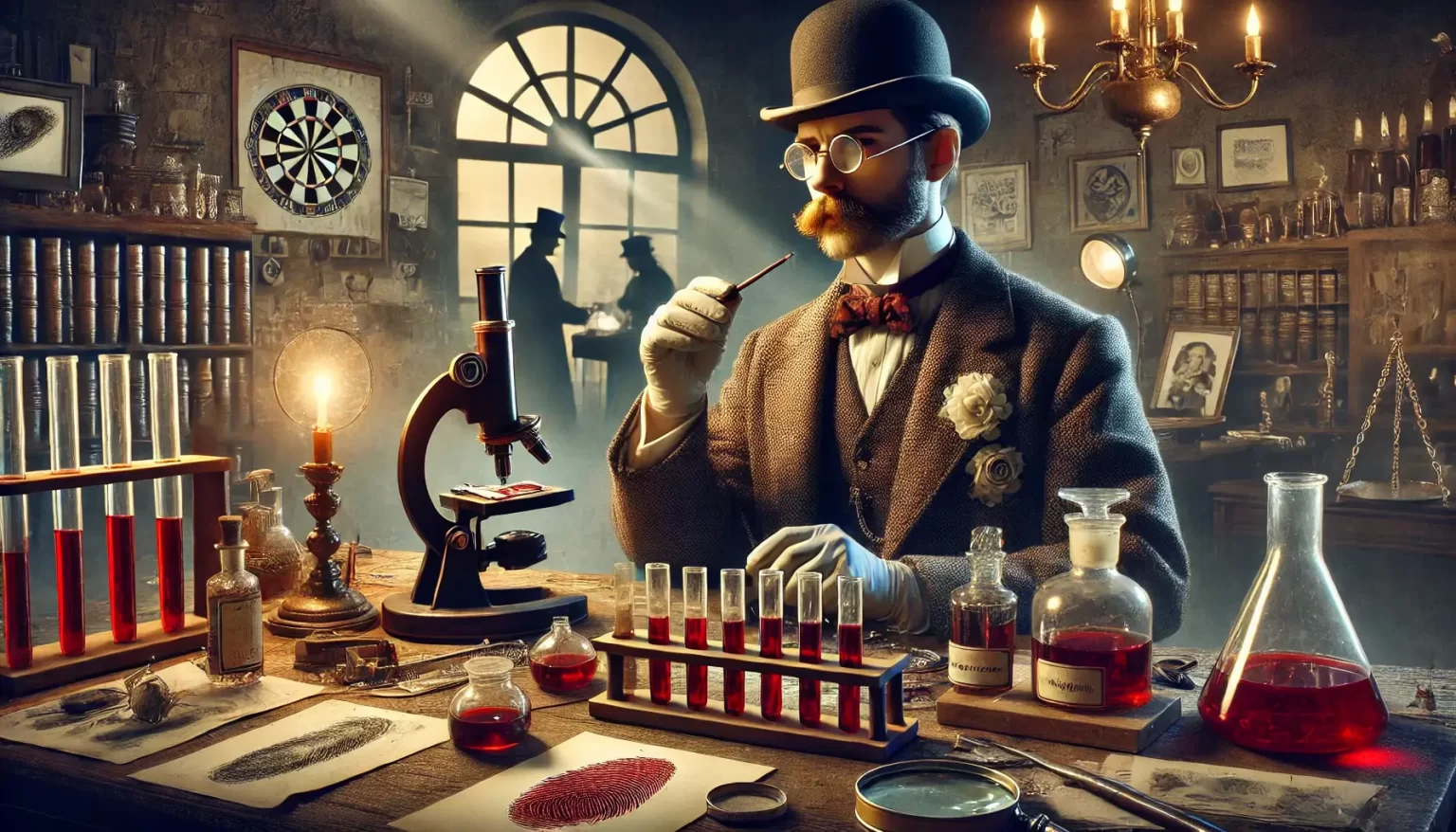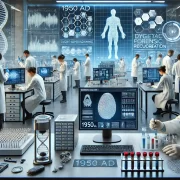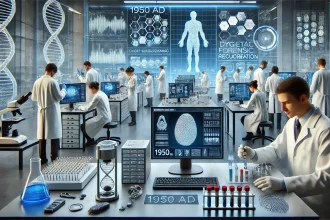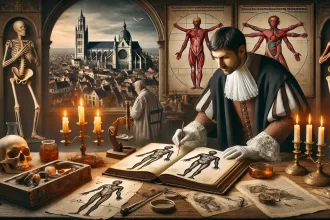1900s to 1950 – The Emergence of Modern Forensics
As forensic science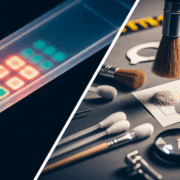
- 1900s to 1950 – The Emergence of Modern Forensics
- 1900: Discovery of Human Blood Groups (ABO System)
- 1901: Fingerprint Identification Replaces Anthropometry at Scotland Yard
- 1901: First Systematic Use of Fingerprints in the United States
- 1901: Paul Uhlenhuth Develops the Precipitin Test for Blood Identification
- 1901: First Use of the Precipitin Test in a Murder Conviction
- 1904: First Court Acceptance of the Precipitin Test in Berlin
- 1904: Max Richter Adapts the Precipitin Test for Blood Typing
- 1902: First Conviction in England Solely Based on Fingerprint Evidence
- 1902: First Academic Curriculum in Forensic Science
- 1903: Will and William West Case Ends the Bertillon System
- 1903: First Use of Fingerprints for Prisoner Identification
- 1904: Locard’s Exchange Principle Established
- 1904: Benzidine Test for Blood Developed
- 1906: First Use of Bite Mark Evidence in Court
- 1908: The Establishment of the F.B.I.
- 1910: First Comprehensive Study on Hair Examination in Forensics
- 1910: Foundational Work in Document Examination
- 1910: Establishment of the First Police Crime Laboratory
- 1910: First U.S. Conviction by Fingerprint Evidence
- 1912: Takayama Test for Blood
- 1912: First Study on Individualizing Bullets to a Gun
- 1915: ABO Blood Typing of Dried Bloodstains
- 1915: Establishment of the International Association for Criminal Identification
- 1915: New York Adopts the Medical Examiner System
- 1916: First Use of a Vacuum for Evidence Collection
- 1918: 12-Point Standard for Fingerprint Identification
- 1920s: Advancements in Ballistics and Firearm Examination
- 1920s: Pioneering Botanical and Soil Identification in Crime Solving
- 1920s: Facial Reconstruction from Skull
- 1921: Invention of the Polygraph (Lie Detector)
- 1922: Nobel Prize for the Mass Spectrometer
- 1923: Absorption-Elution Test for ABO Blood Typing of Stains
- 1923: First U.S. Crime Laboratory
- 1923: Frye Standard for Admissibility of Scientific Evidence
- 1923: Establishment of the Bureau of Forensic Ballistics
- 1924: First Objective Test of Human Brain Activity
- 1925: Development of the Comparison Microscope
- 1925: Recognition of Secretors in Body Fluids
- 1926: Comparison Microscope Used in Bullet Analysis
- 1927: Discovery of the MNSs and P Blood Typing Systems
- 1928: First Presumptive Test for Saliva
- 1929: Discovery of Serological Isoantibodies in Body Fluids
- 1929: First Independent Crime Lab Established
- 1930: Founding of the American Journal of Police Science
- 1930: Development of Lie Detection in Law Enforcement
- 1931: Landmark Book on Hair Analysis Published
- 1931: Absorption-Inhibition ABO Blood Typing Technique Developed
- 1932: Establishment of the FBI Crime Laboratory
- 1935: The First Phase-Contrast Microscope
- 1937: Discovery of Luminol for Blood Detection
- 1937: Secretor Status in Forensic Science
- 1937: Paul Kirk Leads the Criminology Program
- 1938: Identification of Haptoglobin
- 1939: Anthropology in Forensic Investigations
- 1940: Discovery of Rh Blood Groups
- 1940: First Analysis of Ignitable Fluids
- 1941: The Birth of Voiceprint Identification
- 1943: DNA Identified as the Genetic Carrier
- 1945: Development of the Acid Phosphatase Test for Semen
- 1946: Discovery of Additional Blood Group Systems
- 1948: The Birth of Bite Mark Analysis in Forensics
- 1950: Development of the Tape Lift Method for Trace Evidence
- 1950: Founding of the American Academy of Forensic Science (AAFS)
This page explores the rise of forensic laboratories, the standardization of forensic techniques, and the major milestones that transformed forensic science into a cornerstone of law enforcement and justice. Uncover the revolutionary forensic techniques of the early 20th century, from blood typing and firearm analysis to the founding of forensic crime labs.
1900: Discovery of Human Blood Groups (ABO System)
In 1900, Karl Landsteiner (1868–1943), an Austrian pathologist, discovered the ABO blood group system, revolutionizing forensic science and transfusion medicine. His identification of isoagglutinins in human blood cells and serum led to the classification of three main blood groups (A, B, and O), later expanded to include AB.
Landsteiner’s work laid the foundation for forensic blood analysis, allowing investigators to determine blood type from crime scene evidence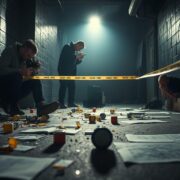
1901: Fingerprint Identification Replaces Anthropometry at Scotland Yard
In 1901, Sir Edward Richard Henry, upon becoming head of Scotland Yard, officially replaced anthropometry with the Galton-Henry fingerprint identification system for criminal identification. This transition marked a major forensic breakthrough, making fingerprinting the standard method in law enforcement.
1901: First Systematic Use of Fingerprints in the United States
In 1901, Henry P. DeForrest pioneered the first systematic use of fingerprintsFingerprint, impression made by the papillary ridges on the ends of the fingers and thumbs. Fingerprints afford an infallible means of personal identification, because the ridge arrangement on every finger of every human being is Read Full Definition in the U.S. through the New York Civil Service Commission. This early adoption demonstrated the efficiency and reliability of fingerprint identification, leading to its nationwide implementation in law enforcement.
1901: Paul Uhlenhuth Develops the Precipitin Test for Blood Identification
In 1901, Paul Uhlenhuth (1870–1957), a German immunologist, developed the precipitin test, allowing forensic scientists to distinguish between human and animal blood. This groundbreaking discovery formed the basis of forensic serology and was one of the first scientific methods for blood identification in criminal investigations.
1901: First Use of the Precipitin Test in a Murder Conviction
In 1901, the precipitin test was successfully used to convict Ludwig Tessnow, a German carpenter, of murder. Bloodstains on his clothing were analyzed using Uhlenhuth’s test, proving they were human blood, leading to his conviction. This was one of the first times forensic serology directly contributed to securing a criminal conviction.
1904: First Court Acceptance of the Precipitin Test in Berlin
In 1904, a Berlin court officially accepted the precipitin test as forensic evidence in a legal trial. The jury upheld the experiment’s findings, making it one of the first scientific methods formally recognized in court for forensic blood analysis.
1904: Max Richter Adapts the Precipitin Test for Blood Typing
In 1904, Max Richter modified Uhlenhuth’s precipitin test to allow forensic scientists to determine blood types from dried bloodstains. This adaptation became a major advancement in forensic science, setting the stage for blood typing in criminal investigations and forensic toxicology.
1902: First Conviction in England Solely Based on Fingerprint Evidence
In 1902, Harry Jackson, a burglar, became the first person in England to be convicted solely based on fingerprint evidence. His fingerprints, found at the crime scene, provided conclusive proof of his involvement, marking a historic milestone in forensic identification.
This case validated fingerprint analysis as a reliable investigative tool, solidifying its role in criminal justice and forensic science.
1902: First Academic Curriculum in Forensic Science
In 1902, Professor R.A. Reiss of the University of Lausanne, Switzerland, established one of the first academic forensic science curricula. A pupil of Alphonse Bertillon, Reiss initially focused on forensic photography, which later expanded into the Lausanne Institute of Police Science.
His pioneering efforts formalized forensic science education, influencing the training of forensic experts worldwide and laying the foundation for modern forensic academic programs.
1903: Will and William West Case Ends the Bertillon System
In 1903, at Fort Leavenworth Prison, two convicts named Will West and William West were discovered to have identical Bertillon anthropometric measurements, making it impossible to differentiate them using the existing system.
However, two years later, fingerprint analysis conclusively distinguished between them, proving fingerprints to be a superior method of identification. This case exposed the flaws of the Bertillon System and accelerated the adoption of fingerprinting as the standard identification method in law enforcement.
1903: First Use of Fingerprints for Prisoner Identification
In 1903, the New York City Police Department became the first law enforcement agency in the U.S. to systematically collect fingerprint records for criminal identification. This pioneering initiative was later adopted by the New York State Prison system in 1905, marking the beginning of fingerprint-based criminal record-keeping in the United States.
1904: Locard’s Exchange Principle Established
In 1904, Edmond Locard, a pioneer in forensic science, introduced his famous principle: “Every contact leaves a trace.” Published in his book L’enquete criminelle et les méthodes scientifiques, this principle became a cornerstone of forensic investigations, emphasizing that criminals always leave physical evidence behind at a crime scene.
1904: Benzidine Test for Blood Developed
In 1904, Oskar and Rudolf Adler developed the Benzidine test, a presumptive testPresumptive test - a test that is typically conducted at a crime scene that provides investigators with basic information regarding the compound in question. Presumptive tests can typically reveal the class of evidence, but are Read Full Definition for detecting blood. Based on benzidine, a newly synthesized chemical by Merk, this test became a widely used forensic tool for identifying bloodstains at crime scenes, laying the groundwork for modern blood detection methods.
1906: First Use of Bite Mark Evidence in Court
In 1906, bite mark evidence was first presented in an English court, leading to the conviction of two burglars. The case was based on teeth marks found in cheese at the crime scene, demonstrating the potential of forensic odontology in criminal investigations. This case set a precedent for using bite mark analysis as forensic evidence.
1908: The Establishment of the F.B.I.
In 1908, President Theodore Roosevelt and Attorney General Charles Bonaparte established the Federal Bureau of Investigation (F.B.I.), starting with 34 special agents. The agency’s first official task was to survey houses of prostitution in preparation for enforcing the White Slave Traffic Act (Mann Act).
The F.B.I. grew into the leading federal investigative agency in the U.S., playing a crucial role in forensic science, criminal investigations, and national security.
1910: First Comprehensive Study on Hair Examination in Forensics
In 1910, Victor Balthazard, a professor of forensic medicine at the Sorbonne, and Marcelle Lambert published Le Poil de l’Homme et des Animaux, the first comprehensive study on human and animal hair. This work included microscopic analyses of various hair samples, laying the foundation for forensic hair comparison.
Shortly after, in one of the first legal cases involving hair evidence, Rosella Rousseau confessed to the murder of Germaine Bichon after forensic hair analysis linked her to the crime. This case validated the use of hair comparison in criminal investigations.
1910: Foundational Work in Document Examination
In 1910, Albert S. Osborne (1858–1946), a pioneering American forensic document examiner, published Questioned Documents, the first comprehensive treatise on document examination principles. His work established scientific methods for analyzing handwriting, forgeries, and altered documents, becoming a cornerstone in forensic document analysis.
Osborne’s methods influenced courtroom standards for questioned documents, making forensic document examination a widely accepted discipline in criminal investigations.
1910: Establishment of the First Police Crime Laboratory
In 1910, Edmond Locard (1877–1966), a successor to Alexandre Lacassagne as professor of forensic medicine at the University of Lyons, France, founded the world’s first police crime laboratory in collaboration with the Lyon Police Department.
Locard refined forensic science techniques, including fingerprinting, trace evidenceTrace evidence - Physical evidence that results from the transfer of small quantities of materials (e.g., hair, textile fibers, paint chips, glass fragments, gunshot residue particles). Read Full Definition analysis, and crime scene investigation. His most significant contribution, Locard’s Exchange Principle, emphasized that “Every contact leaves a trace,” reinforcing the idea that criminals always leave physical evidence behind at a crime scene.
This pioneering crime lab set the foundation for modern forensic laboratories worldwide, revolutionizing criminal investigations by integrating scientific methods with law enforcement.
1910: First U.S. Conviction by Fingerprint Evidence
In 1910, Thomas Jennings became the first person in the United States convicted based on fingerprint evidence. His fingerprints were found at the crime scene, leading to his conviction for murder. This case solidified the reliability of fingerprint identification in U.S. courts and helped establish fingerprints as a key forensic tool in criminal investigations.
1912: Takayama Test for Blood
In 1912, Masaeo Takayama developed the Takayama Test, a microscopic crystal test for hemoglobin. By using hemochromogen crystals, the test allowed forensic experts to confirm the presence of blood at crime scenes. This advancement provided a more specific and reliable forensic method for detecting human blood.
1912: First Study on Individualizing Bullets to a Gun
In 1912, Victor Balthazard (1872–1950) made a groundbreaking discovery in forensic ballistics
He became the first to publish research on individualizing bullet markings, laying the foundation for modern firearm and ballistic identification techniques.
1915: ABO Blood Typing of Dried Bloodstains
In 1915, Leone Lattes (1887–1954), an Italian forensic scientist, developed a method for determining the blood group of dried bloodstains. He first applied this method in a marital dispute case and later published L’Individualità del Sangue, the first book covering forensic blood typing, paternity testing, and heritability. His work established blood typing as a crucial forensic tool in crime scene investigation.
1915: Establishment of the International Association for Criminal Identification
In 1915, the International Association for Criminal Identification was founded in Oakland, California. It later became known as the International Association for Identification (I.A.I.), one of the world’s leading forensic science organizations.
The I.A.I. played a key role in setting forensic standards, advancing fingerprint classification, and promoting criminal identification techniques globally.
1915: New York Adopts the Medical Examiner System
n 1915, the State of New York became the first in the U.S. to replace the coroner system with a medical examiner system. The Office of Coroner was abolished and replaced by the Office of the Chief Medical Examiner of the City of New York.
Dr. Charles Norris (1867–1934) was appointed as the first Chief Medical Examiner, introducing scientific methods and forensic pathology into death investigations, laying the foundation for modern forensic medicine.
1916: First Use of a Vacuum for Evidence Collection
In 1916, Albert Schneider of Berkeley, California, became the first to use a vacuum apparatus for trace evidence collection.
This technique allowed forensic scientists to recover microscopic evidence, such as hair, fibers, and dust particles, from crime scenes and suspects’ clothing, greatly enhancing evidence recovery and forensic investigations.
1918: 12-Point Standard for Fingerprint Identification
In 1918, Edmond Locard, a pioneer in forensic science, first proposed using 12 matching minutiae points as the standard for positive fingerprint identification.
This benchmark for fingerprint comparison became widely accepted and is still used as a guideline in forensic fingerprint analysis today, reinforcing fingerprint evidence as a reliable identification method in criminal investigations.
1920s: Advancements in Ballistics and Firearm Examination
During the 1920s, Calvin Goddard, John H. Fisher, Charles E. Waite, and Philip O. Gravelle made groundbreaking advancements in firearm forensics. They perfected the comparison microscope, allowing for bullet and shell casing analysis, revolutionizing forensic ballistics.
Goddard and Fisher also developed the helixometer, a magnifier probe used to examine the rifling inside firearm barrels, making firearm identification more precise"Precise" refers to the degree of closeness or consistency between multiple measurements or values taken under the same conditions. It indicates how well these measurements agree with each other, regardless of whether they are accurate Read Full Definition. Charles E. Waite pioneered the cataloging of weapon manufacturing data Information in analog or digital form that can be transmitted or processed. Read Full Definition, further aiding investigations.
Information in analog or digital form that can be transmitted or processed. Read Full Definition, further aiding investigations.
The Sacco and Vanzetti case (1921–1927) highlighted the importance of ballistics, as forensic experts used bullet comparisons to link a firearm to the crime, bringing forensic ballistics into the public spotlight.
1920s: Pioneering Botanical and Soil Identification in Crime Solving
In the 1920s, German investigator Georg Popp pioneered the use of botanical and soil analysis to identify crime scene evidence.
By examining soil, pollen, and plant debris on clothing and crime scenes, Popp demonstrated how environmental evidence could link suspects to locations, significantly advancing trace evidence analysis in forensic investigations.
1920s: Facial Reconstruction from Skull
Russian paleontologist Michael Gerasimov developed the first method for facial reconstructionFacial approximation refers to the process of estimating the living facial image of a person from the evidence presented by a recovered skull. Read Full Definition from a skull, revolutionizing forensic anthropologyForensic anthropology is a special sub-field of physical anthropology (the study of human remains) that involves applying skeletal analysis and techniques in archaeology to solving criminal cases. Read Full Definition.
His technique used bone structure, muscle depth, and tissue markers to reconstruct an individual’s facial features, aiding in the identification of unknown remains. His work inspired the character Andreev in the detective novel Gorky Park.
1921: Invention of the Polygraph (Lie Detector)
John Larson, a University of California medical student, built the first polygraph (lie detector) in 1921. His device measured physiological changes such as blood pressure, pulse, and respiration to detect deception.
Later, Leonard Keeler improved the polygraph’s design, adding galvanic skin response (GSR) as another measure of stress. Their work laid the foundation for modern forensic polygraph examinations used in criminal investigations and security screenings.
1922: Nobel Prize for the Mass Spectrometer
In 1922, Francis Aston was awarded the Nobel Prize in Chemistry for developing the mass spectrometer. His invention enabled precise measurement of atomic and molecular masses, paving the way for forensic applications in chemical and drug analysis.
Today, mass spectrometry is crucial in toxicology, drug identification, and trace evidence analysis in forensic science.
1923: Absorption-Elution Test for ABO Blood Typing of Stains
Vittorio Siracusa, working at the Institute of Legal Medicine at the University of Messina, Italy, developed the absorption-elution test for ABO blood typing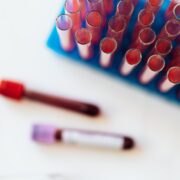
Along with his mentor Leone Lattes, he also contributed to the absorption-inhibition technique, significantly advancing forensic serology. These breakthroughs allowed forensic scientists to determine blood type from dried stains, aiding criminal investigations.
1923: First U.S. Crime Laboratory
In 1923, August Vollmer, Chief of the Los Angeles Police Department (LAPD), established the first forensic crime laboratory in the United States.
This milestone marked the beginning of forensic laboratories in law enforcement, enabling police to conduct scientific analysis of evidence, including fingerprints, ballistics, and chemical tests, to solve crimes more effectively.
1923: Frye Standard for Admissibility of Scientific Evidence
The Frye v. United States court case established the “general acceptance” standard, ruling that polygraph test results were inadmissible in court. This decision set the foundation for determining which scientific evidence could be used in U.S. legal proceedings, shaping forensic science’s role in the courtroom.
The Frye Standard required that scientific techniques be widely accepted by the relevant scientific community before being considered admissible as expert testimony.
1923: Establishment of the Bureau of Forensic Ballistics
The Bureau of Forensic Ballistics, the first institute dedicated to firearm analysis, was founded in New York by Charles E. Waite, in collaboration with Calvin Goddard, John H. Fisher, and Philip O. Gravelle.
This institution pioneered forensic ballistics, developing methods to match bullets to firearms based on rifling patterns and toolmarks, advancing criminal investigations.
1924: First Objective Test of Human Brain Activity
In 1924, German psychiatrist Hans Berger invented the electroencephalograph (EEG), making it possible to measure electrical activity in the human brain. His discovery laid the groundwork for neuroscience, forensic psychology, and lie detection techniques.
Additionally, Dutch physiologist Willem Einthoven developed the electrocardiogram (EKG), improving the study of heart activity, which would later be used in medical forensics.
1925: Development of the Comparison Microscope
Forensic scientists Philip O. Gravelle and Calvin Goddard developed the comparison microscope, revolutionizing ballistic analysis. This device allowed for side-by-side comparison of bullets, cartridge cases, and tool marks, leading to more accurate firearm identification in forensic investigations.
The comparison microscope became a standard tool in forensic ballistics, significantly improving the ability to link firearms to crimes.
1925: Recognition of Secretors in Body Fluids
Japanese scientist Saburo Sirai first identified that group-specific antigens could be secreted into body fluids other than blood. This discovery became crucial for forensic serology, aiding in blood type determination from bodily fluids like saliva and semen in crime investigations.
1926: Comparison Microscope Used in Bullet Analysis
The Sacco and Vanzetti case in Bridgewater, Massachusetts, brought widespread attention to the comparison microscope’s role in bullet comparison. Calvin Goddard’s ballistic analysis helped link bullets to firearms, demonstrating the technique’s effectiveness. In 1961, a re-examination of the evidence upheld Goddard’s findings, solidifying the comparison microscope as a standard forensic tool.
1927: Discovery of the MNSs and P Blood Typing Systems
Scientists Karl Landsteiner and Philip Levine identified M, N, and P blood factors, leading to the development of the MNSs and P blood typing systems. These advancements improved forensic blood analysis and paternity testing, expanding the applications of serology in forensic science.
1928: First Presumptive Test for Saliva
Medicolegal investigator Meüller proposed the use of salivary amylase detection as a presumptive test for identifying saliva stains. This technique became essential in forensic investigations, particularly in sexual assault and bite mark cases, helping confirm the presence of saliva at crime scenes.
1929: Discovery of Serological Isoantibodies in Body Fluids
Japanese scientist K. I. Yosida conducted the first comprehensive study confirming the presence of serological isoantibodies in body fluids other than blood. His findings expanded forensic serology, allowing investigators to analyze bodily fluids beyond blood to identify individuals and strengthen forensic evidence.
1929: First Independent Crime Lab Established
Following Calvin Goddard’s ballistic analysis of the St. Valentine’s Day Massacre, the Scientific Crime Detection Laboratory (SCDL) was established on the campus of Northwestern University, Illinois. It became the first independent crime laboratory, setting the foundation for modern forensic research and criminal investigations.
1930: Founding of the American Journal of Police Science
The American Journal of Police Science was established by the staff of Goddard’s Scientific Crime Detection Laboratory in Chicago. In 1932, it merged with the Journal of Criminal Law and Criminology Criminology is the study of criminal behavior and its interactions with the legal system, incorporating theories, crime prevention, and societal implications. Read Full Definition, forming the Journal of Criminal Law, Criminology, and Police Science, which became a leading publication in forensic advancements.
Criminology is the study of criminal behavior and its interactions with the legal system, incorporating theories, crime prevention, and societal implications. Read Full Definition, forming the Journal of Criminal Law, Criminology, and Police Science, which became a leading publication in forensic advancements.
1930: Development of Lie Detection in Law Enforcement
The prototype polygraph, first invented by John Larson in 1921, was further developed for use in police stations. This advancement laid the groundwork for the use of polygraph examinations in criminal investigations.
1931: Landmark Book on Hair Analysis Published
Forensic scientist John Glaister (1856–1932) published his groundbreaking book, “Hairs of Mammalia from the Medico-Legal Aspect.” This resource became a widely used reference in forensic hair analysis, helping to identify suspects and victims based on hair evidence.
1931: Absorption-Inhibition ABO Blood Typing Technique Developed
Austrian scientist Franz Josef Holzer, working at the Institute for Forensic Medicine at the University of Innsbruck, developed the absorption-inhibition ABO typing technique. This method, building on the work of Siracusa and Lattes, became a standard forensic laboratory procedure for blood typing in criminal investigations.
1932: Establishment of the FBI Crime Laboratory
The Federal Bureau of Investigation (FBI) established its crime laboratory, which has since become one of the most advanced forensic facilities in the world. That same year, Harvard University introduced a chair of legal medicine, solidifying forensic science as an academic discipline.
1935: The First Phase-Contrast Microscope
Dutch physicist Frits Zernike (1888-1966) invented the phase-contrast microscope, allowing the study of internal cell structures without staining or killing the cells. This breakthrough revolutionized biological and forensic microscopy, earning him the Nobel Prize for Physics in 1953.
1937: Discovery of Luminol for Blood Detection
German scientist Walter Specht (1907–1977) discovered that the chemical luminol glows upon contact with latent blood traces. This chemiluminescent reaction became a groundbreaking forensic tool for detecting invisible bloodstains at crime scenes.
1937: Secretor Status in Forensic Science
Austrian forensic scientist Franz Josef Holzer published the first study on secretor status, demonstrating its forensic applications. His research helped investigators determine blood type from bodily fluids, advancing forensic serology.
1937: Paul Kirk Leads the Criminology Program
Forensic scientist Paul Kirk assumed leadership of the criminology program at the University of California, Berkeley. In 1945, he formalized a major in technical criminology, shaping modern forensic education.
1938: Identification of Haptoglobin
Scientists M. Polonovski and M. Jayle identified haptoglobin, a protein in human blood plasma, advancing forensic serology and medical diagnostics.
1939: Anthropology in Forensic Investigations
Forensic anthropologist Wilton Marion Krogman (1903–1987) introduced forensic anthropology to crime investigations with his FBI Law Enforcement Bulletin article, “Guide to the Identification of Human Skeletal Material.” His work revolutionized the use of skeletal remains in forensic science.
1940: Discovery of Rh Blood Groups
Austrian immunologist Karl Landsteiner (1868–1943) and American physician Alexander Solomon Wiener (1907–1976) first described the Rh blood group system, a major breakthrough in forensic serology and transfusion medicine.
1940: First Analysis of Ignitable Fluids
Vincent Hnizda, a chemist with the Ethyl Corporation, pioneered the analysis of ignitable fluids using vacuum distillation, marking a milestone in forensic arson"Arson" is a criminal act involving intentionally and unlawfully setting fire to buildings, structures, or other property types. It is a serious offense and is considered a crime in most legal jurisdictions. Here are key Read Full Definition investigations.
1941: The Birth of Voiceprint Identification
Voiceprint identification was first studied at Bell Labs in Murray Hill, New Jersey, marking the beginning of forensic voice analysis. Later, L.G. Kersta refined the technique, leading to its application in criminal investigations and forensic phonetics.
1943: DNA Identified as the Genetic Carrier
Oswald Avery, Colin MacLeod, and Maclyn McCarty made a groundbreaking discovery, proving that DNA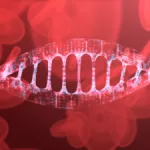 DNA, or Deoxyribonucleic Acid, is the genetic material found in cells, composed of a double helix structure. It serves as the genetic blueprint for all living organisms. Read Full Definition carries genetic information. Their research demonstrated that DNA, not proteins, is the hereditary material, laying the foundation for modern molecular biology and forensic genetics.
DNA, or Deoxyribonucleic Acid, is the genetic material found in cells, composed of a double helix structure. It serves as the genetic blueprint for all living organisms. Read Full Definition carries genetic information. Their research demonstrated that DNA, not proteins, is the hereditary material, laying the foundation for modern molecular biology and forensic genetics.
1945: Development of the Acid Phosphatase Test for Semen
Frank Lundquist, at the Legal Medicine Unit of the University of Copenhagen, developed the acid phosphataseAcid phosphatase- an enzyme found in many tissues but is 500 to 1000 times more active in human semen than any other body fluid. May be used forensically as an indicator for the presence of semen. Read Full Definition test, a breakthrough in forensic serology. This test became the standard presumptive method for detecting semen in sexual assault investigations, revolutionizing forensic examination of biological evidenceBiological evidence - physical evidence such as bodily fluids that originated from a human, plant or animal. Read Full Definition.
1946: Discovery of Additional Blood Group Systems
In 1946, Robert Race identified the Kell blood group system, while Arthur Mourant described the Lewis blood group system. These discoveries expanded forensic blood analysis and transfusion medicine. Later, in 1950, M. Cutbush and colleagues identified the Duffy blood group system, followed by F. H. Allen and team’s discovery of the Kidd blood group system in 1951. These advancements played a crucial role in forensic serology, paternity testing, and criminal investigations.
1948: The Birth of Bite Mark Analysis in Forensics
In 1948, Keith Simpson, a British forensic pathologist, pioneered bite mark analysis by examining bite marks on a murder victim. This marked the formal introduction of forensic odontology, which later became crucial in criminal investigations, particularly in cases involving assaults, homicides, and child abuse. His work laid the foundation for modern bite mark comparison techniques used in forensic dentistry.
1950: Development of the Tape Lift Method for Trace Evidence
In 1950, Max Frei-Sulzer, the founder of Switzerland’s first criminalistics laboratory, developed the tape lift method for collecting trace evidence. This innovation allowed forensic investigators to efficiently recover fibers, hair, and other microscopic materials from crime scenes, playing a vital role in criminal investigations and forensic analysis.
1950: Founding of the American Academy of Forensic Science (AAFS)
In 1950, the American Academy of Forensic Science (AAFS) was established in Chicago, marking a significant milestone in the advancement of forensic science. The AAFS became a leading organization for forensic professionals, fostering research, education, and collaboration in the field. In 1956, the academy launched the Journal of Forensic Science (JFS), with Samuel Azor Levinson, a pathology professor at the University of Illinois, Chicago, serving as its first editor.



